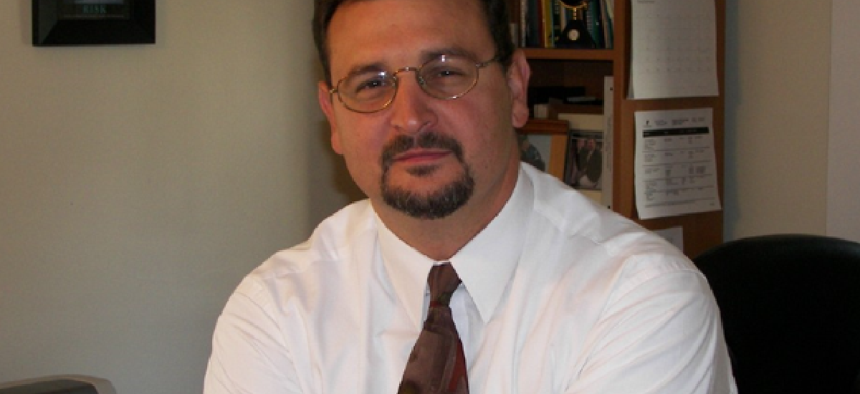Health Insurance Rates: Does the State Definition of Small Groups Hurt Nonprofits?

The following perspective piece is in response to a recent article in New York Nonprofit Media. It first appeared on NYCON’s website.
Leaders of New York's small and mid-sized nonprofits are concerned about health insurance premiums. As well they should be. Nonprofit executive directors struggle annually with rate increases and benefit changes. There is no discounting the level of frustration and confusion many nonprofit leaders feel when faced with the daunting task of "open enrollment."
According to recent commentary in the New York Nonprofit Media, New York State nonprofits were harmed when the State decided to redefine the small group health insurance market to be 1 to 100. The article noted that many nonprofits will now have to pay more for health insurance and will have less choice in the market. As the founder and leader of an insurance brokerage firm working exclusively with nonprofits for nearly 20 years, and currently representing over 1,000 New York State nonprofits, I am still waiting to see a nonprofit harmed by this.
To the contrary, I have seen significant rate reductions, and more choice, than under the prior small group definition.
If you work regularly with the nonprofit sector you tend to notice that nonprofit employees tend to be (mostly) female. Demographically, females tend live longer than males (lower mortality), but also tend to have higher instances of sickness and disability (higher morbidity.) For this reason, any nonprofit that employs mostly females will automatically tend to be looked at unfavorably when it comes to health insurance.
Mark Silvanic, executive director of two Head Start organizations in the Southern Tier, noted, "Gaining a (small group) community rating has been a benefit. ... The fact that Head Start is primarily made up of staff that are 'woman of child bearing age' is a fact that cannot be discounted. The community rating eliminates this factor, allowing for lower rates." Mark's one agency dipped below 50 staff in 2015, allowing his agency access to the community rate one year prior to New York state redefining small group as 1 to 100. His agency saw their rates go down 13.7 percent as a result of this move.
In 2016, the community rate for the same plan was still lower than the rate he was paying as a large group in 2014. That's two years of premium reductions and no changes to the benefits of the plan. Mark's other Head Start agency made the move to small group in 2016 and also saw similar savings.
In Albany, another nonprofit did opt to renew early for 2016, as the previous article indicated, but not to avoid devastating premium and benefit changes. The existing carrier proposed no increase (0 percent) to incentivize them to stay for one more year. It is interesting to note that all community rates effective January 1, 2016 were actually lower than what the existing carrier was offering, even at a 0 percent increase! The timing of changes to move to another carrier, coupled with a rate-hold offered, prompted them to renew early. We are now looking at community rates for 2017, and again, they are lower than the rates they were paying in 2015. Again, two years of rate savings, with no change in benefits.
In addition to lower costs, we have also seen increased choice of carrier options. Insurance carriers are not required to offer quotes to any large group they deem as "demographically unfavorable."
When working to get other quotes, many times we receive a response from a carrier that they feel they cannot be competitive with the current carrier's rates and simply say no to offering a quote. I find this very hypocritical. Insurance carriers are always trying to differentiate themselves in the market, afraid of being "spreadsheeted" alongside their competitors. They feel that this only boils the decision down to price comparing. They stress the importance of their customer service, network choice and national quality awards they've won. They recommend employers and employees not make health insurance decisions based only on price. If they truly believed in this principle, they would not simply walk away from offering a nonprofit a quote based only the thought that they might be a little higher in cost. Yet that is what they do. They see the ages and genders (the demographics) working for the nonprofit and quickly decide they don't want that as a part of their pool of insureds.
With a community rating pool of 1 to 100, all community-rated employers have access to all carriers' plans and rates offered by the carriers in their "community." No need to hope your census is one that is preferable in order to get a quote. No more demographic "cherry picking."
An employer of over 100 staff not only has the necessary size in the marketplace, but also will have a chance at high enough enrollment for accurate experience rating. A nonprofit with only 60 staff may only have 20 to 25 staff enrolled, and that is simply not enough to apply large group underwriting principles. The community rate defined at 1 to 100 works for nonprofits, and maybe even other sectors as well.
Peter Andrew is President and CEO of Council Services Plus, a member of the NYCON Family of Services. Peter has nearly 25 years of experience in the insurance industry and is a past President of the Northeastern New York chapter of the National Association of Health Underwriters (NAHU), and previously served on the NYSAHU Board of Directors. Peter also currently serves on the Board of Directors for Nonprofit Risk Management Center based in Leesburg, VA.
